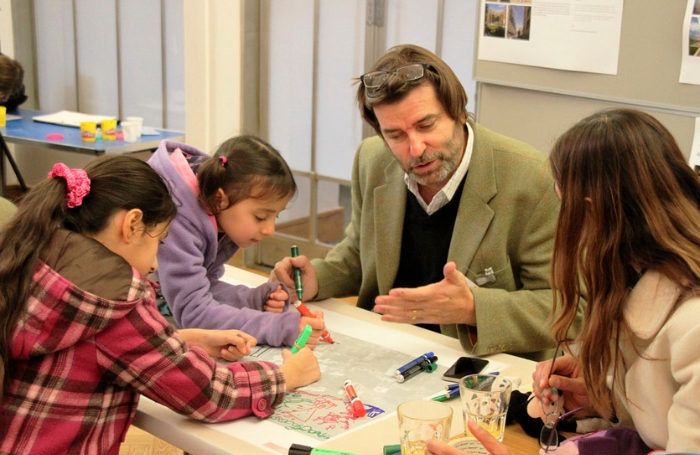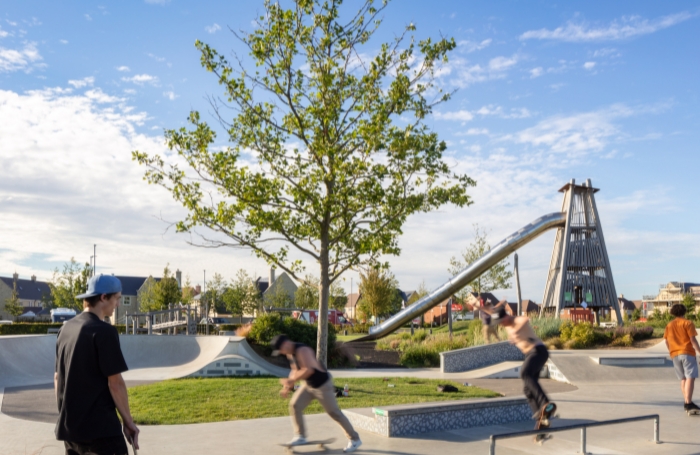One of the key challenges in meeting the government’s ambition to deliver 1.5 million homes during this parliamentary term is securing effective community engagement and making sure that developments are not only high-quality but also meet local needs. Local opposition to housing development - especially at scale - remains one of the most significant hurdles for architects, housebuilders, planners, and policymakers.
To address this, our Engagement Overlay to the Plan of Work - launched in January 2024 - provides a structured framework for meaningful stakeholder engagement across all project stages. Developed and produced in collaboration with the and , and supported by the , it marks the first time a comprehensive engagement process has been systematically set out for the built environment.
Champions of engagement argue that involving communities at the outset through co-design and a genuine participation process will help ensure that a development is responsive to community needs and aspirations, adding social value along the way.

What are the key principles in the overlay?
The Engagement Overlay provides a standardised method and baseline to improve the quality of engagement with all stakeholders, treating engagement as an integral aspect of professional service throughout all work stages.
Its key principles include:
- Beyond traditional participation: Moving past basic consultation to enable early, effective, and proportionate engagement, encouraging shared decision-making;
- Fostering inclusivity and democracy: Ensuring design processes are inclusive and democratic, responsive to community needs, and supportive of resilient futures;
- Enriching projects with local knowledge: Using local insights to create sustainable, socially valuable neighbourhoods;
- Promoting trust and transparency: Building trust through collaborative approaches that enhance accountability;
- Evidence for procurement and social value: Supporting professionals in demonstrating high-quality engagement for procurement and social value assessments.
How can the overlay help with scalability and visioning?
Charles Campion, Partner-in-Charge of Collaborative Planning at , says his practice – which bills itself equally as architects, masterplanners, and placemakers – has been following a broadly similar set of principles since its inception (the practice was set up by community architecture pioneer John Thompson).
He argues that the overlay has a number of great strengths, such as its clearly structured approach to processes and its front-loading of community and stakeholder engagement at the earliest design stages to flesh out the vision. Crucially, he says the overlay is scalable and can be applied to any scale of housing development.
“Whether you’re building 100 homes on the edge of a village or 6,000 homes or more in the middle of the countryside or close to a city, there are always people, interest groups, and organisations who are passionate about their place and know their community,” he adds. “Our job as professionals in the design world is to bring the professionals and communities together to co-create the best possible places, and that’s the only way to do it.”
Engagement has to go beyond drawings and physical design, though. The exercise must set out a vision for what sort of place the development will become, and how this will connect with existing community.
He continues: “Once we’ve had those early briefings, conversations and design sessions in the workshops, we draw up an holistic vision and for the first time people start to see what the new place could look and feel like, and that is a hugely important step. It doesn’t mean that everyone is necessarily going to get everything they ask for, but having listened to other viewpoints, built relationships and been involved in shaping the vision, we find that people are more likely to want to continue on the journey together.”

Why authentic and holistic planning works best
Its recently launched JTP Engages services focus on attracting the widest spread of interest groups it can. This includes staging fun and engaging events with a serious purpose. For instance, the use of digital platforms and social media to engage the younger generation, who are often overlooked in the planning process. The aim is always to make engagement as inclusive as possible and recognise that participants will have varying levels of time and focus to dedicate to the engagement process.
For local people who can devote more time to the process, the recently introduced environmental demands on housebuilders (such as biodiversity net gain, low energy design solutions, and sustainable drainage) can be leveraged to involve community members with relevant interests. This helps to create engagement groups focused on open space planning and sustainability, and can have a big impact on the very early stages of delivery.
Key to successful engagement is authenticity, Charles argues. Both sides - professionals and local people - must feel that the process is genuine, that they are gaining from it, and that the journey is adding value along the way. He also stresses the importance of rooting engagement in existing infrastructure - movement, ecology, social spaces - to create a holistic vision that goes beyond physical design to define the character and connectivity of the future place.

Why are legacy and stewardship are important considerations?
Mark Patchett, Director at , specialises in building partnership approaches between developers and local authorities - or development corporations and local communities - particularly where they involve the creation of a Community Land Trust. He has been a consultant on a number of major housing developments, such as the 15,000 homes planned for Ebbsfleet Garden City, and his declared preoccupation and passion is for legacy and stewardship. The question of what happens after the developers have gone is always at the forefront of he and his team’s thinking.
He argues that early engagement should inform not just design, but also the future management of community infrastructure.
“We often see developers retrofitting a vision, or engaging only to tick a statutory box,” says Patchett. “But stewardship - who looks after the place once built - is vital and often overlooked.”
Charles agrees, noting the imbalance in investment: “We’ll spend millions on roads that won’t be fully used for decades, but often struggle to fund a community shop for the first families.”
He adds that JTP is bringing discussions on continuation, management, and stewardship of places to the earlier stages of its engagement processes in recognition that it needs to be talked about at the outset.
Ultimately, the strength of the Engagement Overlay lies in its adaptability. Its robust principles - rooted in inclusivity, transparency, and local knowledge - can be scaled to suit projects of any size, from small infill developments to expansive new communities.
As Charles puts it, “At the end of the day, particularly when you're designing large scale master plans for new towns or new communities, it's the communities who are the ultimate clients.”
Recognising this and embedding it into the design process is key to creating places that are not only built well, but lived in well.
Download our Engagement Overlay.
Thanks to Charles Campion, JTP; Mark Patchett, Community Stewardship Solutions.
Text by Neal Morris. This is a Professional Feature edited by the RIBA Practice team. Send us your feedback and ideas.
RIBA Core Curriculum topic: Business, clients, and services.
As part of the flexible RIBA CPD programme, professional features count as microlearning. See further information on the updated RIBA CPD core curriculum and on fulfilling your CPD requirements as a RIBA Chartered Member.



